Case Study as part of a Web-based
Technical and Regulatory Guidance
Horse Heaven Mine Site
Jefferson County, Oregon
1. Site Information
1.1 Contacts
Cliff Walkey
Project Manager
Oregon Department of Environmental Quality
425 NE Bellevue Dr., Suite 110
Bend, OR 97701-7415
Telephone: (541) 633-2003
E-mail: [email protected]
1.2 Name, Location, and Description
The Horse Heaven Mine is an abandoned mercury mine located on approximately
40 acres approximately 17 miles due east from Ashwood, Oregon, Township 10
South, Range 18 East, Section 12, in Jefferson County (Figure 1-1). The latitude
is 44º 30' 52.20" N; longitude is120º, 30' 19.10" W. The site is
extremely remote. The base zoning of the Horse Heaven Mine is exclusive farm
use (rangeland). Although there are individual ranch homesteads within a
few miles of the site, the nearest communities are Ashwood and Antelope.
Geographically, the facility is located approximately 1,500 feet from Horse
Heaven Creek, an ephemeral stream that discharges into Muddy Creek (Redband
trout habitat).
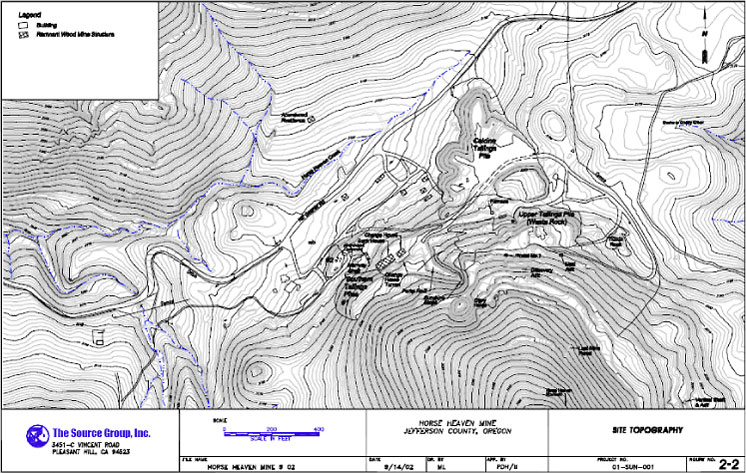
Figure 1-1. Horse Heaven Mine site map.
The first deposit was discovered at Horse Heaven by Art Champion and Grover Keeton in 1933. In 1934, the prospect was sold to R. R. Whiting and C. C. Hayes, who developed the Number One level of the mine and produced 2,200 flasks of mercury over the next two years. In 1936, the Horse Heaven Mine was sold to the Sun Oil Company (Sunoco), and a subsidiary company (Horse Heaven Mines, Inc.) was formed to operate the mine. The mine was operated continuously until 1944, when a fire destroyed the furnace, power plant, and other structures. Total production at that time was 15,097 flasks of mercury. The mine closed in 1945 after cleanup operations produced another 74 flasks of mercury.
The mine was reopened in 1955 using a new 30-ton rotary furnace plant. During the 1955–1958 period, the major pillars supporting the slopes and incline were removed, and the most productive part of the mine caved and was made inaccessible. Total production as of 1958 was 17,214 flasks of mercury. There does not appear to have been any production since that time. Ore rock consisted primarily of cinnabar that was processed through various furnaces located at the mine site. The current property owner of record is Ms. Susan Batterson of Everett, Washington. There is a seasonal residential cabin and outbuildings and historic structures related to the mining era.
The affected media at the site include soil, sediment and other process waste ore rock and calcine. Mercury and arsenic are the primary contaminants of concern.
2. Remedial Action and Technologies
The Horse Heaven Site is in the Oregon Department of Environmental Quality’s
Voluntary Cleanup Program. The cleanup was conducted in compliance with the
Comprehensive Environmental Compensation and Liability Act (CERCLA). A final
record of decision (ROD) was posted in 2005, and remedial actions were completed
in two phases during 2006 and 2007. The remedial action addressed the presence
of mercury and arsenic in contaminated soils and groundwater as well as physical
hazards represented by mine workings.
The objectives of the remedial action were as follows:
- Promote overall protection of human health and the environment.
- Prevent the tailings from being moved offsite by the public.
- Prevent the potential for off-site transport of the tailings via storm-water runoff.
- Remove mine dump refuse that was deposited off site.
- Protect the public from physical hazards associated with mine portals (Figures 2-1 and 2-2).
- Protect any suitable bat habitat associated with mine portals
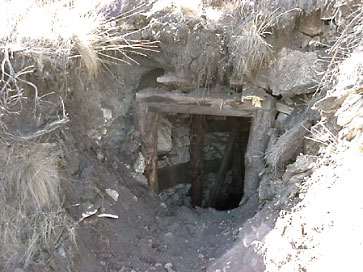
Figure 2-1. Unprotected mine portal.
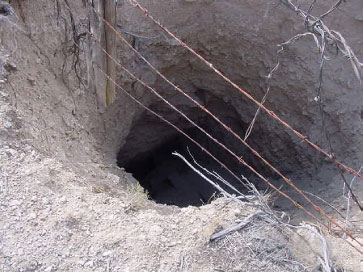
Figure 2-2. Dangerous open glory hole at head works.
The remedial action consisted of the following elements:
- Excavation and on-site entombment and capping of D-furnace area soils
- Collection, entombment, and capping of solid waste mining debris on site
- Regrading of calcine tailings to mitigate mass wasting and off-site migration
- Abatement and mitigation of physical hazards represented by extant mine portals
- Construction of storm-water retention basins (Figure 2-3)
- Conservation of bat habitat (Figure 2-4)
- Institutional controls concerning use and access restrictions
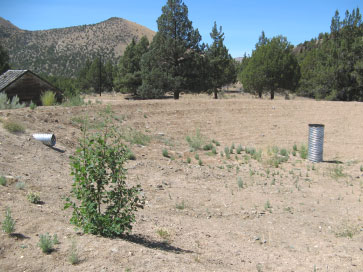
Figure 2-3. Storm-water retention basin.
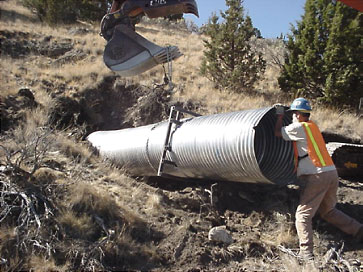
Figure 2-4. Installation of bat gate in mine portal.
Capping includes placement of alluvial sediments over a limited area associated with the D-tube furnace that had been documented to have elevated concentrations of mercury. Two settling ponds were also constructed for site storm-water retention. These retention basins were designed to eliminate any off-site migration of mine tailings.
3.
Performance
Effectiveness of the remedial actions is evaluated with required
annual site inspections and reports that evaluate conformance with
remedial goals and objectives. The first annual inspection report
was performed and submitted in 2008 and documented that the remedy,
as constructed, was protective as intended.
In addition, institutional controls were imposed through recordation with Jefferson County. Restrictive covenants govern future redevelopment capacity and requirements to maintain engineering control (fencing, signing). In addition, there are prohibitions on removal of calcine and/or other site material containing mercury.
4. Costs
No information available.
5. Regulatory Challenges
Leaving large quantities of solid mine waste in place on site presents
issues with long-term stewardship (LTS). LTS can include the use of restrictive
and/or environmental covenants and implementation of a monitoring and maintenance
plan. Restricting site access or allowing continued use of the site for
part time residency, recreational, or industrial purposes poses a unique
set of challenges.
Due to the size of these mine waste sites, it is often not feasible to fence or otherwise block access to the site. Many members of the community do not recognize that the sites are private property and trespass frequently. This is especially true of historic mine site like Horse Heaven that become destinations for persons and groups interested in Oregon mining history. Monitoring and maintenance become the primary regulatory challenge in these instances, especially with respect to physical hazards associated with unstable ground and mine portals such as glory holes that are challenging with respect to limiting access to trespassers
6. Stakeholder Challenges
This site has litigation pending on mineral rights to calcine from former
owner. The former owner (plaintiff) lost the first round but has appealed
to 9th Circuit Court.
7. Other Challenges and
Lessons Learned
Engineering control has certain limitations at this specific site. Specifically,
fencing was unfeasible at specific mine portals, and mass wasting compromises
constructed fencing at specific locales. External bat surveys were feasible,
but internal bat surveys were not.
Institutional controls were required to prevent uncontrolled off-site distribution of mercury-containing ore, country rock, and/or, calcine. Physical hazards needed to be addressed because Horse Heaven Mine is a destination for public, spelunkers, hobbyists, etc. The remedial action to address the physical hazards represented by mine portals while conserving bat habitat is unique, if not innovative. The seasonal resident required risk evaluation.
8. References
Oregon Department of Environmental Quality, Eastern Region. 2005. “Record
of Decision, Recommended Remedial Action for Horse Heaven Mine, Sunco.”
